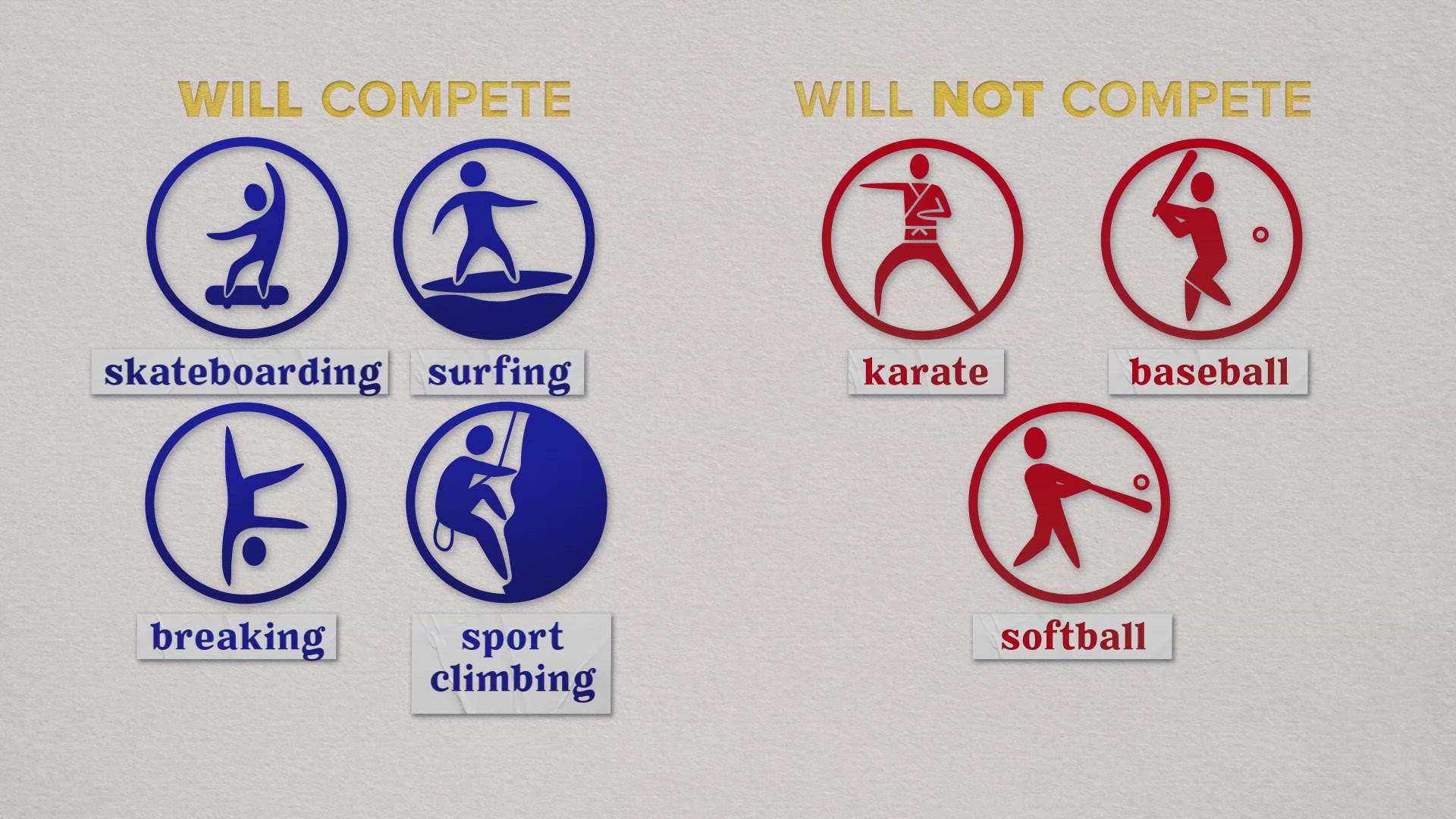PARIS, France — The b-girls and b-boys are ready for their spotlight.
On Friday, the breakers, or breakdancers, begin syncing their moves to the DJ's breakbeat in front of the biggest audience breaking has ever known.
Earlier this week, the dancers-turned-athletes at the Summer Olympics tested out the dance floor of the breaking venue at the Place de la Concorde in Paris ahead of the first competition on Friday. The stage resembles a giant record and the backdrop is a massive replica of a boombox. It's a nod to the musical root of breaking — the breakbeat itself — the moment when a song's vocals drop and the DJ loops the beat over and over, to allow b-boys and b-girls to make their mark on the dance floor.
“Even though people weren’t there yet, I could just see the crowd already," American Logan Edra, or “b-girl Logistx,” said after seeing the stadium for the first time. “And the floor felt amazing.”
The 33 breakers representing 15 countries and the Refugee Olympic Team will take to the dance floor on Friday and Saturday, vying for gold for the first time in Olympic history.
For first-time watchers, there’s a lot to understand about the elements of breaking. Beyond the dance form's unique culture and history stemming from Black and brown communities in the Bronx in the 1970s, there is no other event like it at the Olympics. Some have likened it to a mix of gymnastics and martial arts, but with music and improvisation. Breaking has its own judging structure — the Trivium judging system, which will allow judges to evaluate breakers on their technique, vocabulary or variety, execution, musicality and originality.
“This is also going to be the only sport where they’re going to incorporate other elements of hip-hop, because there’s going to be a DJ and there’s going to be a host, or an emcee,” said Ronnie Abaldonado, a breaker who is one of NBC’s commentators for the breaking competition.
The DJ has a major role in orchestrating the flow of the competition.
“No matter whether it’s a high-production event or just a local gym, breaking is always about the party," said Zack Slusser, vice president of Breaking for Gold USA and USA Dance. "And the DJ facilitates that party.”
Slusser described breaking as live storytelling, with characters and emotion all present on the stage, unfolding a narrative in real time.
The DJ "establishes the energy in the room. He’s kind of like the narrator, and then the breakers themselves, they're the protagonist or antagonist in the story, but the audience at the event, or the people watching — reading the book — they have to feel that energy.”
The breakers won't know what songs or music they'll compete to — the element of surprise is just as much a part of their experience as the audience's. It leads to an atmosphere that's raw, emotional and energetic. The stadium will be transformed by that energy, said Tyquan Hodac, executive director of Breaking for Gold USA.
“It's not a spectator sport. The audience is part of the whole show as well, they're part of the party,” Hodac said. “There's a feedback loop. It's a story, a conversation between everyone."
Breaking itself is made up of four primary elements: Toprock, Power moves, Footwork and Freezes.
Within those elements are an infinite combination of moves that make up a dancer's routine. Routines are rehearsed, but dancers have to be careful not to be repetitive and keep the spontaneity and improvisational aspect of the performance at its core. And “biting,” or copying, a set of moves from an opponent can cost them.
The Olympic competition will begin in a round-robin phase, when groups of four breakers will face off against each other one by one. Only two will emerge from each round-robin group before the quarterfinals, semifinals and the final matchup to determine the champion by the end of the evening.
The b-girls will begin on Friday with a pre-qualifier between India Sardjoe of the Netherlands, or “b-girl India,” against the refugee team's Manizha Talash, or “b-girl Talash,” who is originally from Afghanistan and sought asylum in Spain. Talash was a late addition to the Olympic roster — she missed registration for any qualifying breaking events, but her story of breaking and defying the strict rule of the Taliban in her home country captured the attention of the International Olympic Committee executive board, and she was invited to participate.
The b-boys take the stage on Saturday.
Here's a breakdown of the four elements to look for in the breaking competition:
Toprock
How a breaker starts their dance, while still standing, before going to the floor. It's an introduction to the dancer and their style, before they launch onto the floor into their footwork and other moves.
Footwork
Also known as “downrock,” there are moves done on the ground, with support from hands, as the breaker moves their legs through a variety of steps.
Power move
Dynamic moves that highlight acrobatics and strength, using repetitive, circular movements, including head spins, air flares and windmills.
Freeze
A static position when a breaker hits and holds a move for a few seconds. It's most appreciated when it's synced up with a particular beat or sound in the music.

